
Fundamentals
The concept of Natural Coloration, when viewed through the profound lens of textured hair, speaks to the inherent hues bestowed upon each strand by ancestral design. This foundational understanding centers upon the pigments synthesized within the hair follicle itself, a process as old as human existence. Every curl, coil, and wave carries a unique spectrum of shade, a living archive of generations past.
At its simplest, natural coloration is the physical manifestation of Melanin within the hair shaft. Melanin, a complex biopolymer, orchestrates the entire visual range of hair, from the lightest whispers of gold to the deepest midnight tones. This intrinsic pigmentation differentiates a person’s hair color, setting it apart from any externally applied dyes or treatments.
The explanation of natural coloration begins at the cellular level, deep within the hair follicle, where specialized cells meticulously create the very pigments that define our hair’s appearance. It is a biological designation, a direct result of our genetic lineage.

The Melanin Palette ❉ A Basic Description
Hair coloration is primarily determined by two principal forms of melanin ❉ Eumelanin and Pheomelanin. Eumelanin provides the shades of brown and black, while pheomelanin contributes to the warmer, red and yellow tones. The specific concentration and ratio of these two pigments dictate the resulting hair shade.
For individuals with textured hair, particularly those of Black and mixed-race heritage, eumelanin is often present in higher concentrations, lending itself to the deep, rich browns and blacks so frequently seen. This abundance of eumelanin carries ancient wisdom within its structure, offering protection and signifying connection to ancestral lands where strong sun ruled the day.
Consider a single strand, born from its follicle, carrying these pigments from its very inception. This is the truth of natural coloration. It is a biological signature, reflecting genetic blueprints passed down through countless family lines. The definition of this phenomenon acknowledges hair’s original, unadulterated state, a state that holds immense cultural value and historical weight.
Natural coloration refers to the inherent, genetically determined pigmentation of hair, primarily governed by eumelanin and pheomelanin, which expresses itself differently across diverse hair textures.

Ancestral Hues and Their Meaning
Across various ancestral traditions, the natural shades of hair held significant meaning. Hair, in its purest state, was often seen as a conduit to spiritual realms or a marker of tribal affiliation and social standing. The depth of color, often dark, in many African and diasporic communities, spoke volumes about one’s connection to the earth, to community, and to a shared lineage.
The interpretation of these hues went beyond mere aesthetics; it was a deeply ingrained aspect of identity. The black and deep brown tones common in Afro-textured hair, for instance, were not merely a color but a testament to vitality and resilience, a visual statement of enduring strength.

Intermediate
Moving beyond the basic framework, the intermediate understanding of Natural Coloration deepens into the intricate dance between melanin synthesis, follicular structure, and the resulting phenotypic expression in textured hair. This section clarifies how the quantity and distribution of eumelanin and pheomelanin contribute to the spectrum of hues observed, while simultaneously exploring the anatomical distinctions of textured hair that allow these colors to present themselves with singular brilliance. It is a delineation that bridges fundamental biology with observable, heritage-rich outcomes.
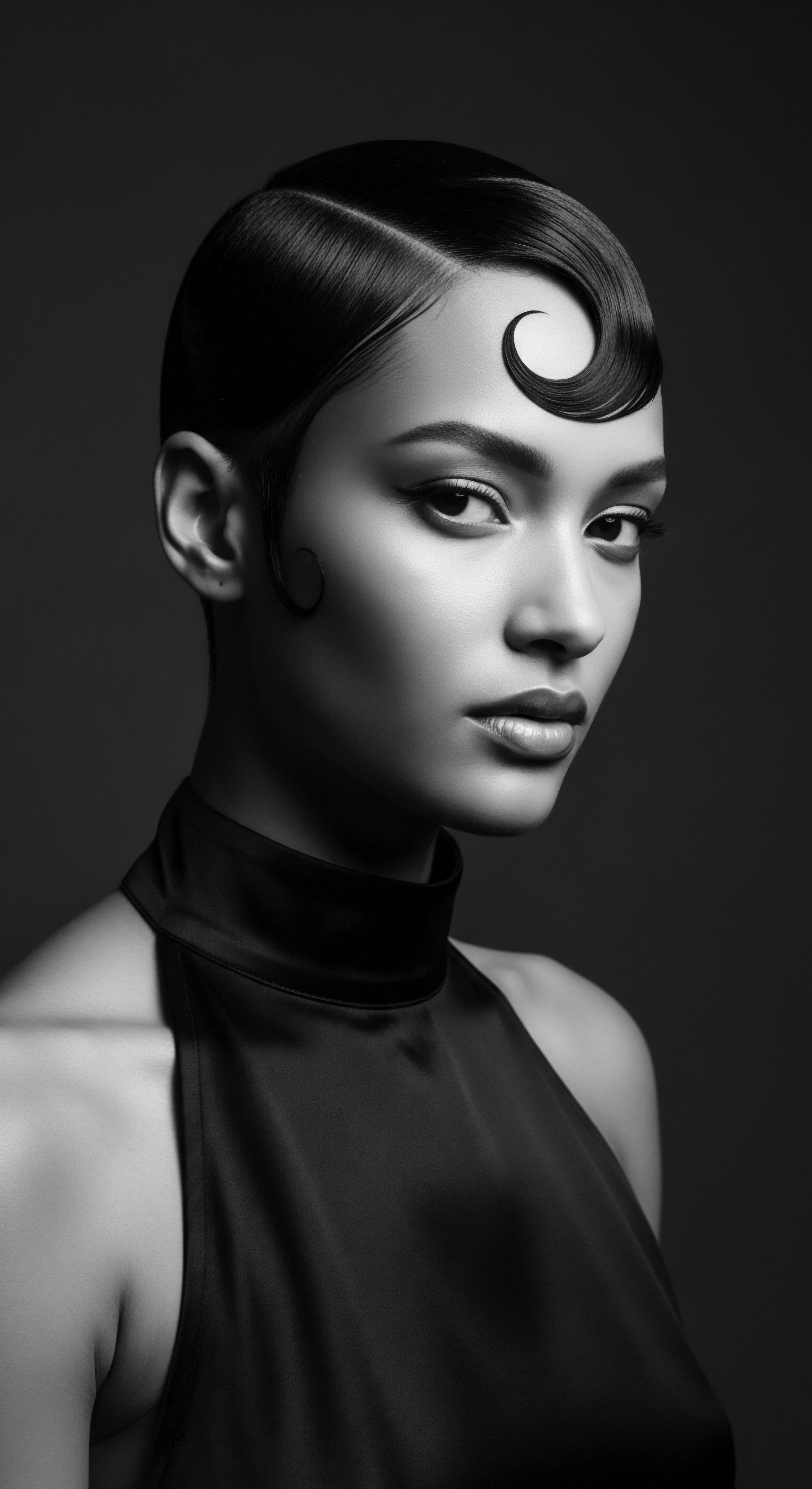
Melanin’s Microscopic Architecture
The production of melanin takes place within specialized cells called Melanocytes, residing within the hair follicle. These remarkable cells synthesize melanin in discrete packets known as Melanosomes. The size, shape, number, and distribution of these melanosomes within the hair fiber significantly influence the final color.
Black and dark brown hair, characteristic of many textured hair types, contains large, numerous, and densely packed eumelanosomes. This high concentration of eumelanin is not simply a random occurrence; it speaks to an ancient, evolutionary adaptation, providing natural defense against the sun’s potent rays.
The presence of pheomelanin, even in small amounts, can add warmth or a reddish undertone to darker strands. The precise balance between these two melanin types renders the subtle variations within what we might broadly term “dark hair,” creating a rich palette of deep browns, jet blacks, and even hints of auburn under sunlight. The intrinsic sense of hair color, therefore, goes beyond a singular shade, embracing a continuum of tones that are often overlooked by a casual glance.

The Influence of Hair Texture on Color Perception
The unique helical structure of textured hair, with its characteristic curls and coils, interacts with light in a manner distinct from straighter hair types. Light scatters differently off these tightly wound strands, which can affect the apparent depth and luminosity of the natural coloration. Coils and kinks often absorb more light, contributing to the perception of richer, denser color, even when the underlying pigment concentration is comparable to that of straighter hair. This interplay between light and structure shapes the visual import of one’s hair.
This phenomenon means that the same absolute amount of melanin might appear differently depending on the hair’s curl pattern. A deep brown in a tightly coiled pattern might appear almost black, while a looser wave with similar pigment could present as a lighter brown. This interaction is a vital aspect of appreciating the physical qualities of natural coloration within the context of textured hair.
The interplay of melanin type, melanosome distribution, and the distinct helical structure of textured hair collectively shapes the profound visual characteristics of natural coloration.
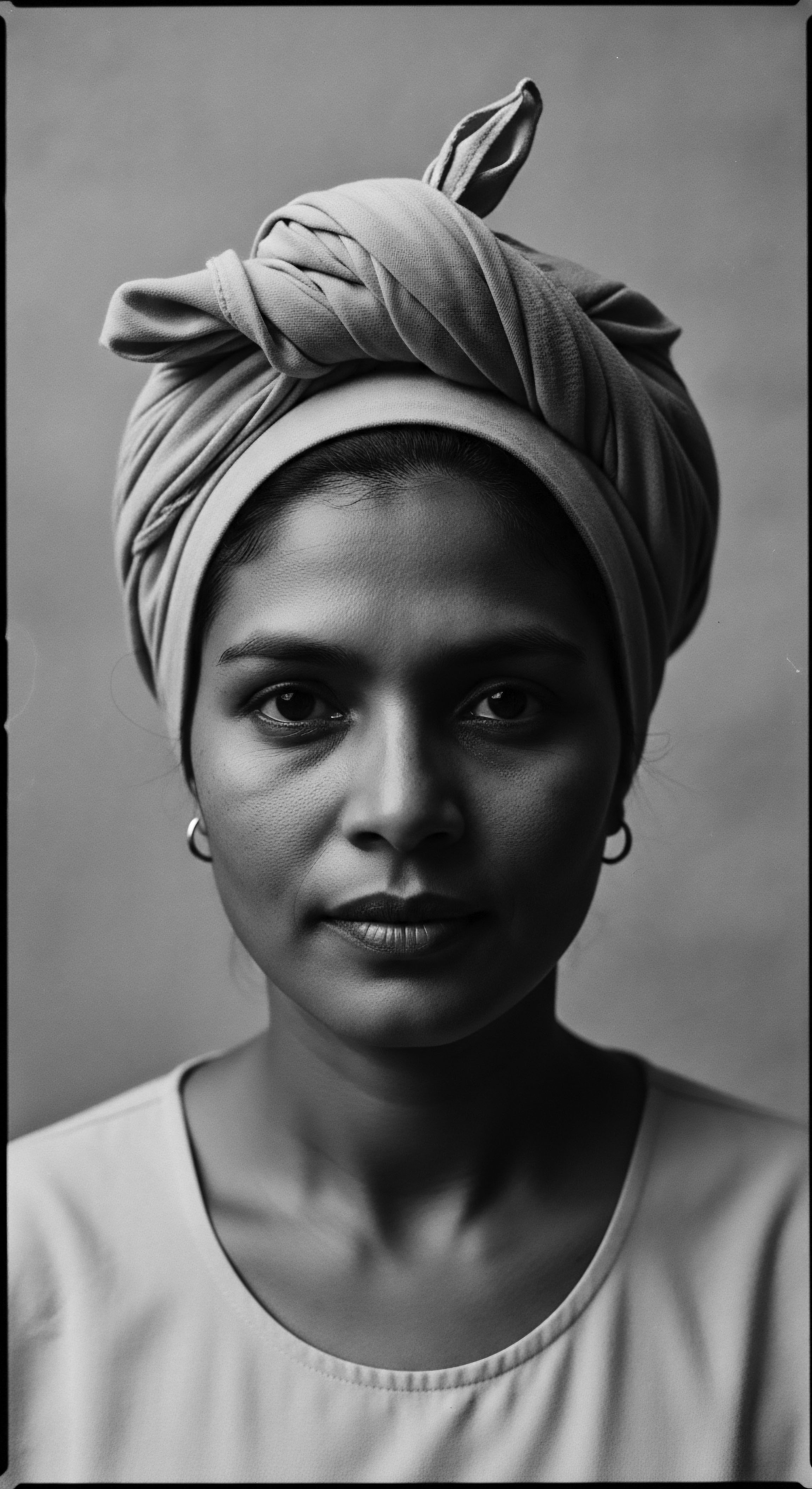
Traditional Applications and Meanings of Natural Coloration
Long before synthetic dyes, ancestral communities understood the natural coloration of hair and sometimes sought to enhance or alter it using plant-based preparations. These practices were often imbued with cultural significance beyond mere beautification. For instance, in parts of Africa, the use of substances like Ochre or specific botanical extracts might have been applied not to drastically change color but to enrich natural hues, add sheen, or signify status. These treatments worked in harmony with the hair’s existing pigments.
Consider the widespread use of Henna (Lawsonia inermis), a natural dye known for thousands of years across North Africa, the Middle East, and South Asia. While often associated with reddish tones, henna in various traditional preparations could deposit a translucent color that deepened the existing dark shades of hair, adding a reddish-brown luminescence without stripping the hair’s innate color. This ancestral practice demonstrates an understanding of working with, rather than against, the hair’s natural state. It was not about erasing the original designation of color, but about adding another layer of visual story.
- Indigo ❉ Often combined with henna in various traditional remedies, particularly in parts of West Africa and India, to achieve deeper, darker shades approaching black. This combined application illustrates an ancient mastery over natural color modification.
- Walnut Hulls ❉ Throughout history, the hulls of walnuts have been used to create dark brown to black dyes, a practice found in some European and Middle Eastern traditions that might have influenced some diasporic communities over time. These natural sources provided means to deepen color respectfully.
- Hibiscus Petals ❉ While not a strong dye, hibiscus was sometimes used in traditional hair rinses to impart a reddish tint or to enhance the natural red pigments in hair, particularly when mixed with other agents. Its use reveals a subtle artistic touch in ancestral hair care.
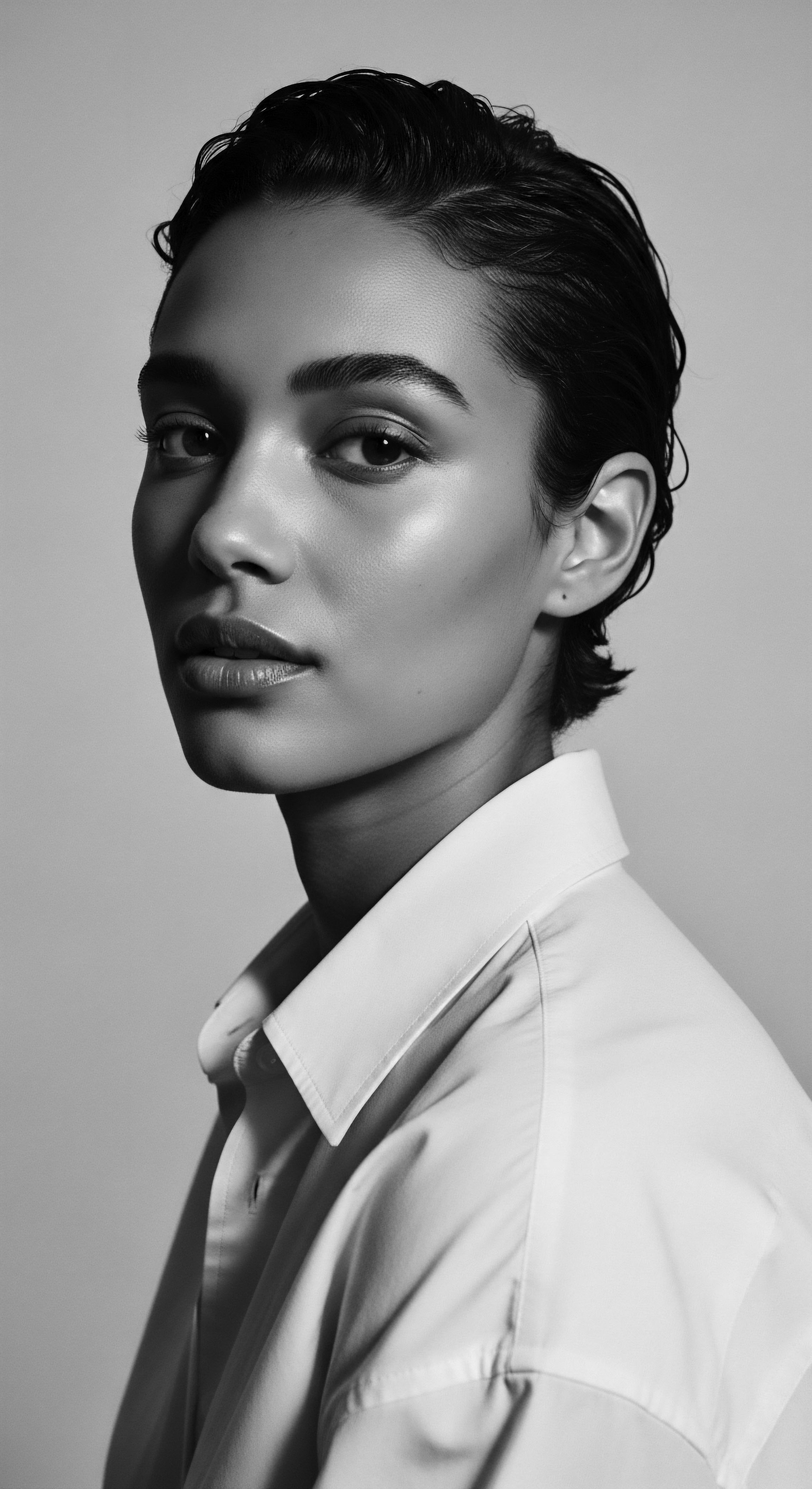
Academic
The academic understanding of Natural Coloration extends into a rigorous examination of its biological underpinnings, its deep anthropological significance, and the sociopolitical constructs that have shaped its interpretation, particularly within the context of textured hair heritage. This exploration moves beyond simple identification of color to a detailed analysis of its meaning, its role as a biological adaptation, and its complex influence on identity across the Black and mixed-race diaspora.
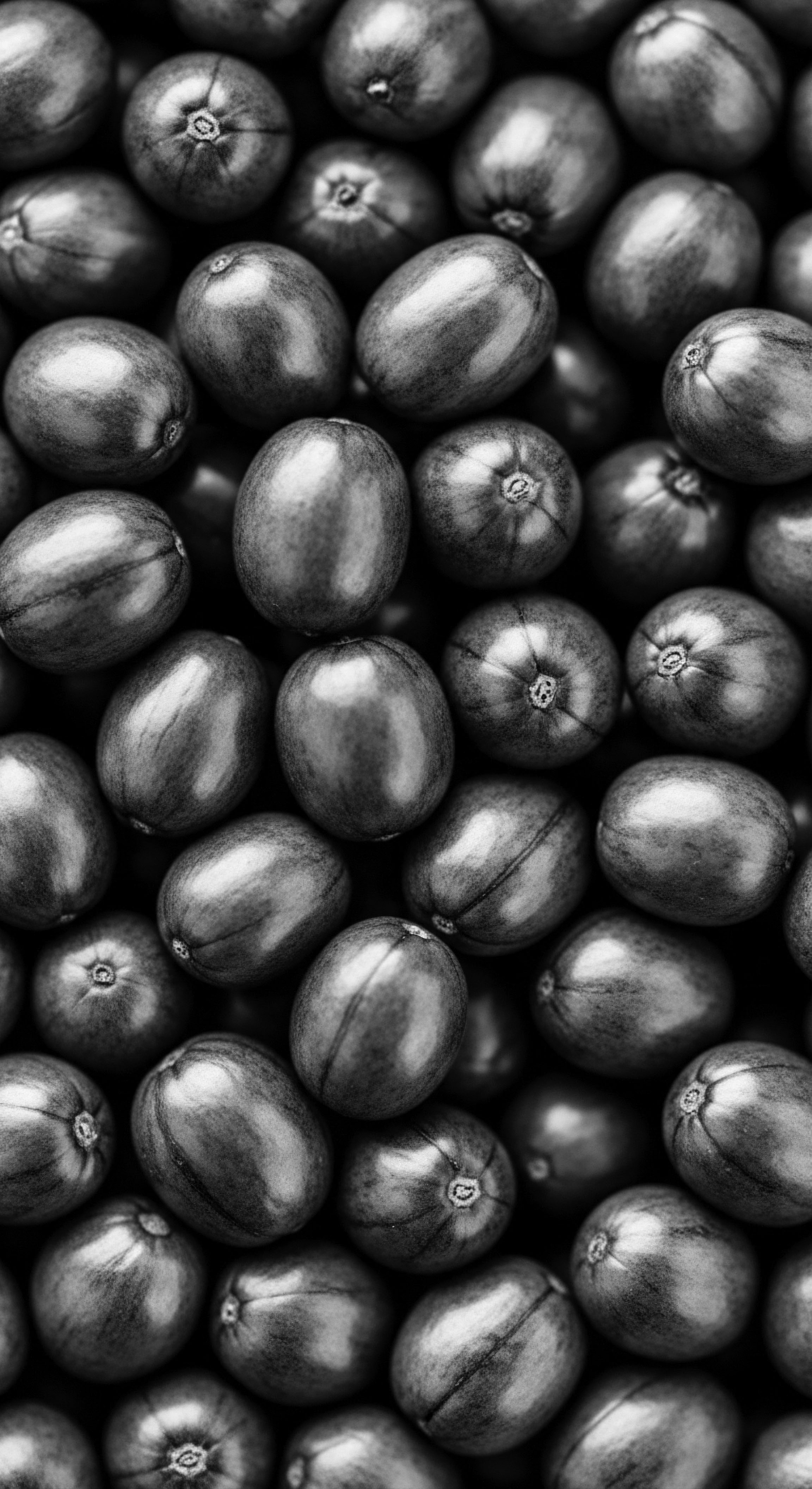
The Biochemical Foundation of Hair Pigmentation
The inherent color of human hair is a consequence of melanogenesis, a highly regulated biochemical pathway occurring within the melanocytes of the hair follicle. This process involves the oxidation of the amino acid Tyrosine, catalyzed by the enzyme Tyrosinase, leading to the formation of intermediates that polymerize into two distinct types of melanin ❉ eumelanin and pheomelanin. Eumelanin, comprising black-brown pigments, is largely responsible for the dark hues characteristic of most human hair globally, especially prevalent in populations of African ancestry.
Pheomelanin, a reddish-yellow pigment, contributes to lighter shades and red hair. The precise ratio and density of these two pigments within the cortical cells of the hair shaft determine the final shade observed.
Variations in specific genes, such as MC1R (Melanocortin 1 Receptor), are recognized for their influence on the eumelanin-pheomelanin balance. While certain alleles of MC1R are strongly associated with red hair in European populations, individuals with darker hair, including the vast majority of people of African descent, typically possess functional MC1R variants that promote robust eumelanin production. The designation of hair color is therefore an intricate genetic symphony, a biological statement of ancestral journey.
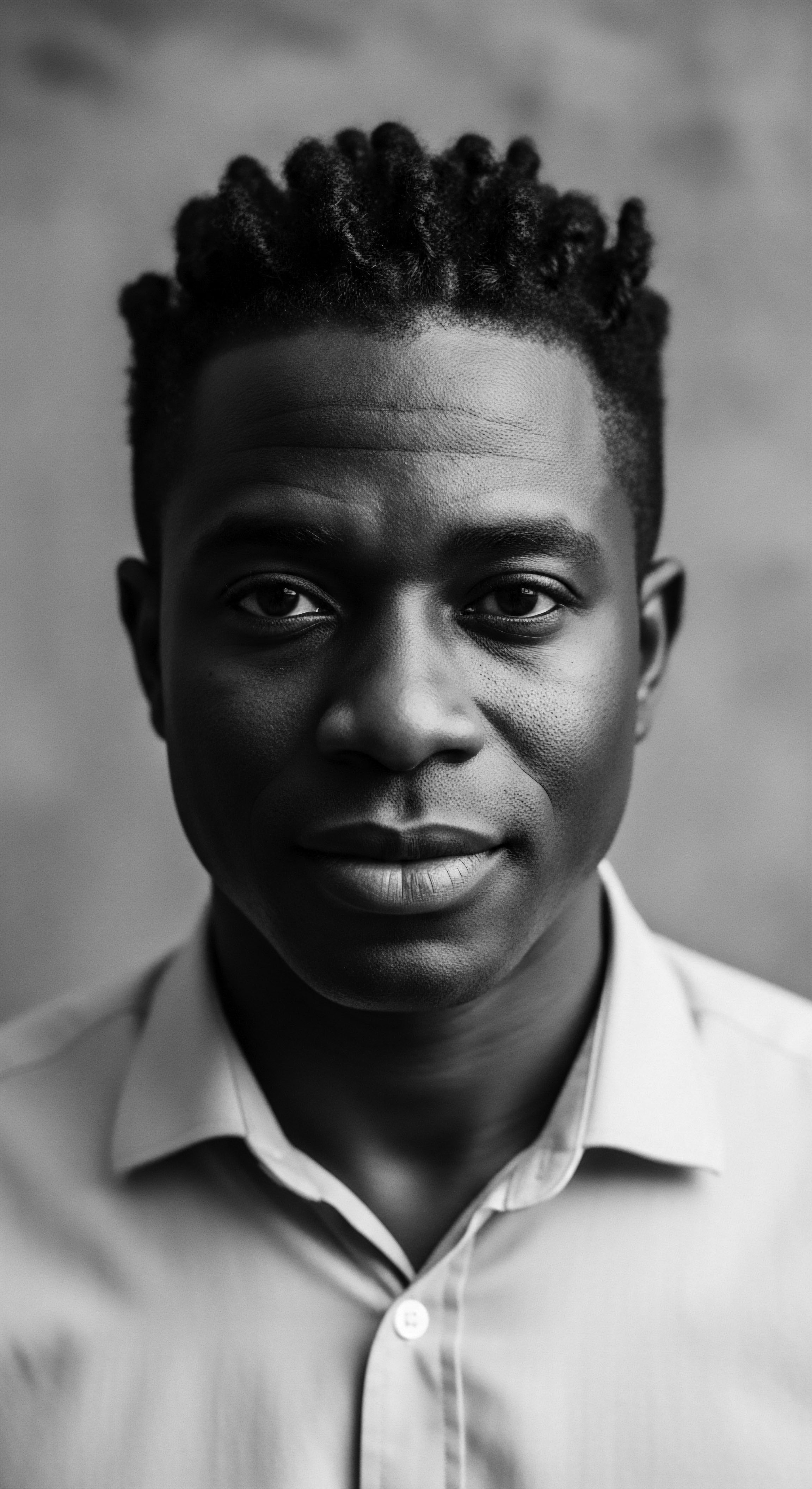
Evolutionary Adaptation and Hair Morphology ❉ A Case Study in African Ancestry
The deep, rich hues and distinctive coil patterns of textured hair in populations of African ancestry are not merely aesthetic attributes; they represent remarkable evolutionary adaptations to environments with intense ultraviolet (UV) radiation. This scientific elucidation of natural coloration connects directly to the heritage of resilience embedded within these hair types. The high concentration of eumelanin, responsible for dark hair, provides significant photoprotection, shielding the scalp and hair follicle cells from UV-induced damage.
Crucially, beyond pigment, the very morphology of tightly curled or coiled hair also plays a direct role in thermoregulation and UV protection. Jablonski and Chaplin (2014) propose that the tightly coiled nature of hair, which is a singularly human characteristic among most non-domesticated mammals, acts as a protective barrier, reducing heat gain from sun exposure and creating an insulating air layer close to the scalp. This structural adaptation works in concert with the high melanin content, showcasing a sophisticated biological solution to environmental pressures.
The prevalence of tight curls and high eumelanin in hair of African ancestry represents a sophisticated co-evolutionary adaptation for photoprotection and thermoregulation against intense solar radiation.
Indeed, a compelling statistic underscores this anatomical distinction ❉ Nearly 80-90% of sub-Saharan Africans possess Type 4 Hair, characterized by its dense, tight coils. This striking prevalence within a continent of immense genetic diversity speaks volumes about the adaptive advantages conferred by this hair structure. The understanding of natural coloration, when examined through this lens, is not just about the color itself, but the entire biological and historical meaning of its presentation, affirming hair as an archive of human movement and survival. The interpretation of these biological attributes moves beyond simple categorization, revealing a complex interplay of environmental forces and genetic heritage.
| Aspect of Natural Coloration High Eumelanin Content |
| Biological Basis Concentrated black-brown pigment in melanosomes. |
| Heritage Significance for Textured Hair Offers superior natural UV protection for scalp and hair. |
| Aspect of Natural Coloration Tightly Coiled Hair Structure |
| Biological Basis Elliptical follicle shape; hair grows in a helical pattern. |
| Heritage Significance for Textured Hair Creates an insulating air layer, minimizing heat absorption and direct UV exposure to the scalp. |
| Aspect of Natural Coloration These combined features illustrate the profound adaptive legacy of natural coloration and morphology in African diasporic hair. |
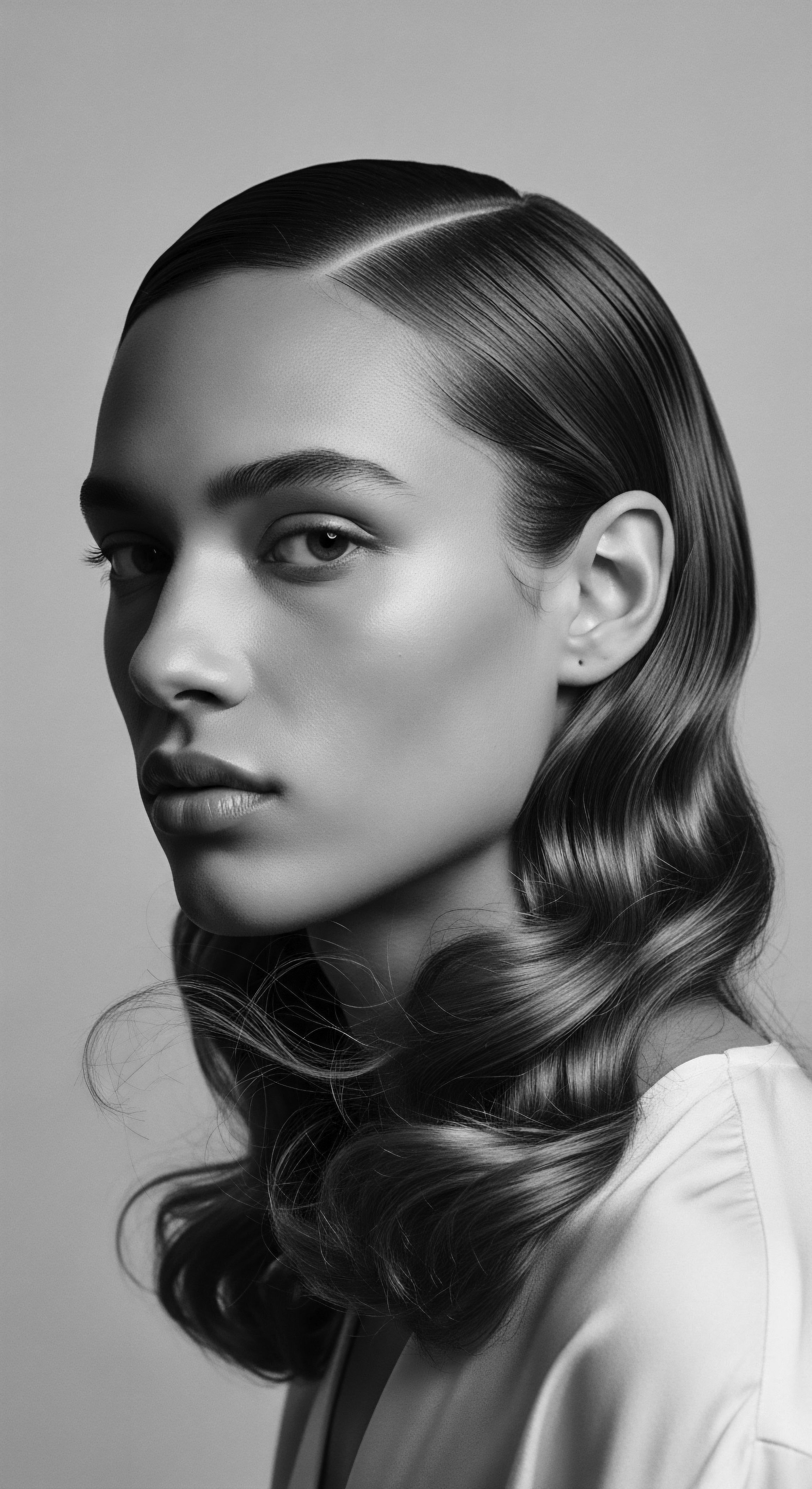
Sociocultural Interpretations and the Shifting Meaning
The interpretation of natural coloration, particularly for Black and mixed-race individuals, has rarely been a purely biological discussion. Throughout history, the inherent shades and textures of hair have been imbued with layers of social, political, and cultural meaning. In pre-colonial African societies, hair color, alongside its intricate styling, could communicate a person’s age, marital status, tribal affiliation, wealth, and even spiritual standing. The natural deep tones were simply accepted and adorned, without a notion of inferiority.
With the advent of the transatlantic slave trade and subsequent colonization, a forced re-interpretation of hair’s natural coloration occurred. Eurocentric beauty standards systematically devalued tightly coiled, dark hair, promoting lighter skin and straighter hair as the ideal. This period saw the deliberate suppression of ancestral hair practices and the stigmatization of natural hair’s appearance. The deep blackness, once a symbol of vitality, was redefined by oppressive forces as “bad” or “unruly.” This historical context is vital for grasping the profound significance of the contemporary Natural Hair Movement.
The Natural Hair Movement, which gained prominence in the mid-20th century and continues its revitalization today, represents a collective reclamation of ancestral aesthetics and self-acceptance. It is a conscious decision to reject imposed beauty norms and to celebrate the inherent beauty of natural hair, including its true coloration and texture. This movement asserts that the true color of one’s hair is beautiful and valid, moving beyond simplistic external validations. This shift is not merely about styling preferences; it is a profound act of self-definition and cultural affirmation, seeking to restore the rightful meaning to inherent hair characteristics.
- Diasporic Adaptation ❉ Across various parts of the diaspora, traditions arose that either preserved ancestral practices or adapted them, sometimes incorporating new natural ingredients. The color black, in hair, remained a grounding force.
- The “Crown Act” ❉ Modern legislative efforts, such as the CROWN Act in the United States, aim to prohibit discrimination based on hair texture and protective hairstyles, implicitly acknowledging the deep historical prejudice against natural coloration and texture in formal settings. This legal recognition solidifies the social importance of inherent hair characteristics.

Reflection on the Heritage of Natural Coloration
The true definition of Natural Coloration, particularly as it relates to textured hair, transcends a simple biological explanation. It holds within its very strands a vibrant narrative, a living archive of resilience and beauty stretching back to the earliest human origins. Each shade of brown, each depth of black, each subtle red undertone in textured hair is a testament to the journeys of our ancestors, their adaptations to diverse climates, and their profound understanding of self as reflected in their crowning glory. This reflection calls us to remember that our hair’s inherent hue is not a random occurrence, but a deeply meaningful aspect of our inherited story.
The understanding of hair’s natural shades becomes a pathway back to ancestral wisdom, reminding us of a time when hair was intrinsically linked to identity, community, and spiritual belief. The choices made today, to honor and cherish these innate colors and textures, are powerful echoes of those who came before us, rejecting centuries of imposed standards and reclaiming a heritage that was never truly lost, only obscured. This recognition is an invitation to view our hair with reverence, acknowledging its connection to the earth, to the sun, and to the unbroken lineage that flows through our veins.
The journey of comprehending natural coloration is a continuous unfolding. It compels us to see our hair not just as a physical adornment, but as a dynamic expression of our lineage, continually shaping how we present ourselves to the world. The vibrancy of natural hues on textured strands symbolizes an enduring spirit, a quiet strength passed from one generation to the next.

References
- Abrams, L. S. et al. (2020). Adolescent girls’ understanding of colorism and skin tone. Health & Social Work, 45(4), 221-230.
- Byrd, A. D. & Tharps, L. D. (2002). Hair Story ❉ Untangling the Roots of Black Hair in America. St. Martin’s Press.
- Chaplin, G. (2004). The human skin color spectrum. Evolutionary Anthropology ❉ Issues, News, and Reviews, 13(3), 101-111.
- Commo, S. et al. (2004). Alteration of melanogenesis and melanocyte survival in aging human hair follicles. International Journal of Cosmetic Science, 26(3), 133-142.
- Dawson, C. D. et al. (2019). Hair matters ❉ Toward understanding natural black hair bias in the workplace. Journal of Leadership and Organizational Studies, 26(4), 389-401.
- DeGruy, J. A. (2005). Post-Traumatic Slave Syndrome ❉ America’s Legacy of Enduring Injury and Healing. Uptone Press.
- Jablonski, N. G. & Chaplin, G. (2014). The evolution of skin pigmentation and hair texture in people of African ancestry. Dermatologic Clinics, 32(1), 1-12.
- Johnson, A. N. & Bankhead, A. (2014). Decolonizing Black hair ❉ The politics of natural hair in the contemporary United States. Journal of Black Studies, 45(1), 3-21.
- Lashley, J. (2020). Hair ❉ A Cultural History. Bloomsbury Academic.
- Mercer, K. (1994). Welcome to the Jungle ❉ New Positions in Cultural Studies. Routledge.
- Murray, M. D. (2015). Human Melanin ❉ Biological, Chemical, and Physical Properties. CRC Press.
- Robinson, N. (2011). Black women, “good hair,” and self-esteem. Women & Therapy, 34(3), 356-369.
- Sherrow, V. (2006). Encyclopedia of Hair ❉ A Cultural History. Greenwood Press.
- Thompson, J. (2009). Hair Story ❉ Untangling the Roots of Black Hair in America. St. Martin’s Press.
